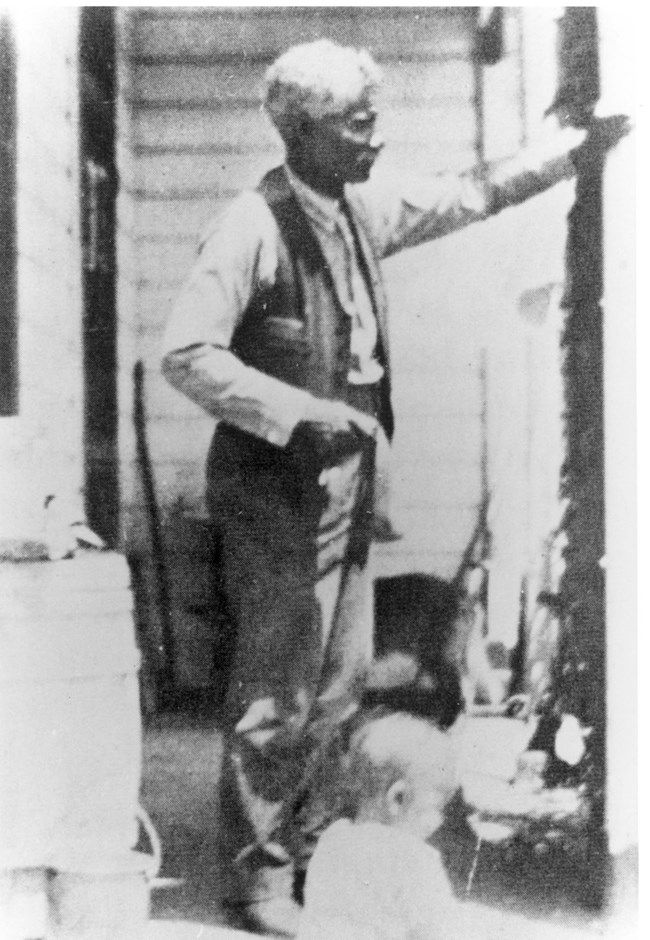
In August, 1908, a thunderstorm devastated the nearby town of Folsom, New Mexico, dropping 14 inches of rain on the mesa just above the town. After the flood, George went out to survey the damage caused by the torrent. Riding down an arroyo, he noticed some bones protruding from the bank of the arroyo. There were two things about the bones that were unusual. First, they were protruding from a section of the bank that was 11 feet below the surface, and McJunkin knew that meant they were older than the bones typically found on the high-country grasslands. Secondly, they were obviously bison bones, but they were much larger than any bison bones he’d seen before. George knew that he’d found something significant and tried to get a professional to look at his discovery. He managed to get two amateur fossil collectors excited, but he couldn’t get anyone’s interest despite sending letters to many different educational institutions. After McJunkin’s death in 1922, the two fossil collectors kept up the effort to figure out exactly what these bones signified. Four years after his death, the Colorado Museum of Natural History came down and looked at some of the specimens excavated from the site, thinking that at least the Museum would be able to get a reasonably intact specimen of a prehistoric Bison skeleton. Instead, they found something spectacular. What the Museum found in the embankment are what are now known as “Folsom points”. These are stone projectile points that were clearly used by the bison hunters. What electrified the archeological community was the fact that the points were intermingled with the giant bison ribs, and one of them was actually embedded in one of the ribs. Since they knew that these giant bison (Bison Antiquus) roamed the area back around 9,000 B.C.E., they were now able to place mankind in North America almost 7,000 years earlier than previously thought. It was a game-changing discovery. The two amateur fossil collectors were given credit until 1971, when an archeologist at Eastern New Mexico University figured out that it was George McJunkin who really discovered the site. The end result is that an African American former slave was responsible for turning the discipline of Archeology on its ear, and by virtue of his discovery, wrote himself into an indelible spot in American History. |
Last updated: August 1, 2020
